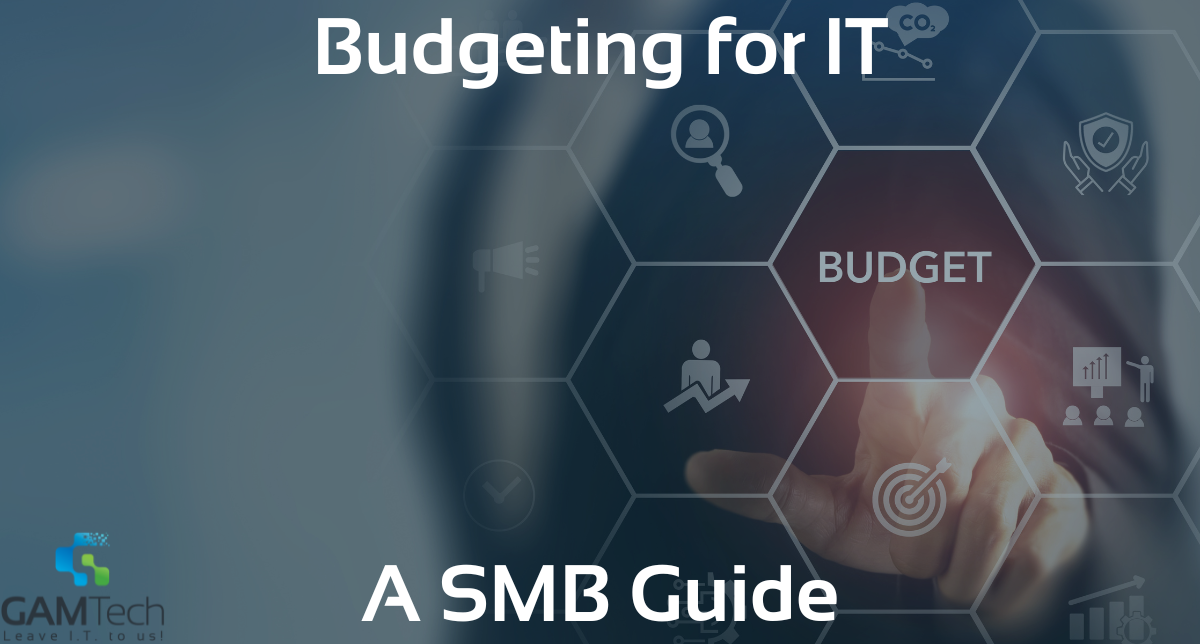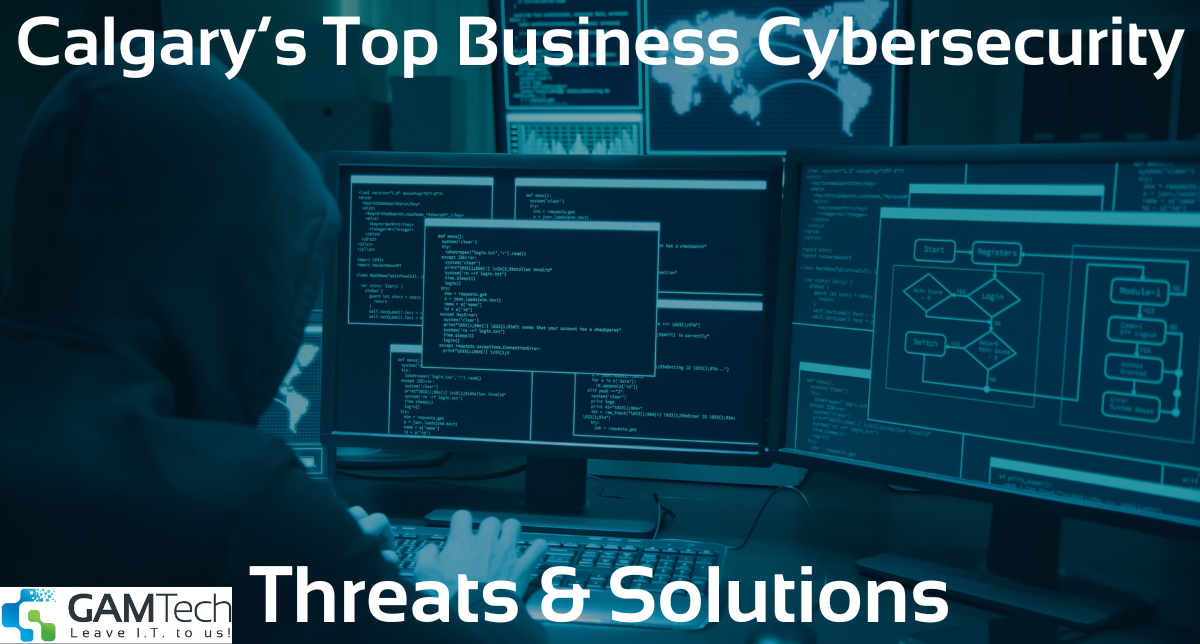Calgary’s Top Business Cybersecurity Threats and Solutions
Calgary, a thriving hub of economic growth and innovation, boasts a dynamic business environment that fosters entrepreneurial spirit. However, this...

Today, small and medium businesses need smart, realistic IT budgets to stay competitive. Budgeting can feel hard—especially when funds are tight. This guide gives simple steps to plan, spend, and track your IT costs.
Start with an audit of your current IT. List your hardware, software, networks, and services. Note what works, what doesn’t, and the gaps to fix.
Flag outdated or unused gear and licenses to retire or combine. Use the audit to build a budget that fits your goals.
The next step in effective IT budgeting is aligning your IT expenditures with your business goals and priorities. Take the time to define clear, measurable objectives that IT investments can support, whether it's improving operational efficiency, enhancing customer experience, or driving revenue growth.
By establishing concrete goals, you can prioritize IT initiatives that deliver the most significant value and allocate resources accordingly. Whether you're investing in new hardware to support business expansion or upgrading cybersecurity measures to mitigate risks, ensure that each expenditure contributes directly to achieving your overarching business objectives.
When budgeting for IT, it's essential to allocate funds strategically across various categories to ensure comprehensive coverage of your IT needs. Common budget categories may include hardware procurement, software licensing and subscriptions, network infrastructure maintenance, cybersecurity measures, IT personnel salaries and training, and contingency reserves for unforeseen expenses.
Prioritize critical areas such as cybersecurity and data protection to safeguard your business against cyber threats and ensure regulatory compliance. Additionally, allocate sufficient resources for ongoing maintenance and support to keep your IT infrastructure running smoothly and minimize downtime.
When evaluating IT investments, it's crucial to consider not only the upfront costs but also the total cost of ownership (TCO) over the entire lifecycle of the technology. While opting for budget-friendly solutions may seem appealing initially, they may incur higher maintenance and support costs in the long run.
Conversely, investing in higher-quality, reliable technologies may entail a higher initial investment but can result in lower TCO through reduced maintenance, enhanced performance, and longer service life. Conduct thorough cost-benefit analyses to assess the TCO of various IT options and make informed decisions that maximize value for your business
Cloud computing and virtualization technologies offer SMBs cost-effective alternatives to traditional on-premises IT infrastructure. By migrating workloads to the cloud and leveraging virtualization solutions, SMBs can reduce capital expenditures on hardware procurement and maintenance while gaining scalability, flexibility, and enhanced disaster recovery capabilities.
Evaluate your business's IT needs and consider adopting cloud-based solutions for email hosting, data storage, software-as-a-service (SaaS) applications, and infrastructure-as-a-service (IaaS) offerings. Cloud services eliminate the need for upfront infrastructure investments, allowing SMBs to pay only for the resources they use on a subscription basis.
In today's cybersecurity landscape, SMBs are increasingly targeted by cyber threats ranging from ransomware attacks to data breaches. Therefore, allocating sufficient resources to cybersecurity measures is paramount to protect your business's sensitive data, intellectual property, and reputation.
Invest in robust cybersecurity solutions such as firewalls, intrusion detection systems, antivirus software, and encryption tools to safeguard your IT infrastructure from malicious actors. Additionally, prioritize employee cybersecurity training to raise awareness of common cyber threats and promote best practices for data security and privacy.
As your business expands and evolves, your IT infrastructure must be able to scale seamlessly to accommodate growing demands. When budgeting for IT, consider scalability as a key factor in technology selection and deployment.
Choose scalable hardware and software solutions that can grow with your business without requiring significant capital investments or disruptive migrations. Additionally, leverage modular and flexible IT architectures that allow for easy expansion and integration of new technologies as your business needs evolve.
Outsourcing certain IT functions to third-party vendors or managed service providers (MSPs) can provide SMBs with access to specialized expertise, resources, and cost efficiencies. Consider outsourcing tasks such as helpdesk support, network monitoring, cybersecurity management, and software development to trusted partners with proven track records.
By outsourcing non-core IT functions, SMBs can free up internal resources, reduce overhead costs, and focus on core business activities. Evaluate potential outsourcing partners based on their expertise, reliability, and alignment with your business objectives to ensure a successful partnership.
Effective IT budgeting doesn't end with allocation; it requires ongoing monitoring, measurement, and optimization to maximize return on investment (ROI). Establish key performance indicators (KPIs) to track the impact of IT expenditures on business outcomes, such as productivity, revenue growth, and customer satisfaction.
Regularly review IT spending against budgeted allocations and KPIs to identify variances, inefficiencies, and areas for improvement. Use these insights to refine your IT budgeting process continually, reallocate resources as needed, and prioritize investments that deliver the greatest ROI for your business.
Investing in employee training and skill development is essential to unlock the full potential of your IT investments and drive innovation within your organization. Allocate funds for IT certifications, professional development programs, and hands-on training to empower your team with the knowledge and expertise needed to leverage technology effectively.
Encourage continuous learning and skill enhancement among your IT staff to keep pace with emerging technologies, industry best practices, and evolving business requirements. By nurturing a culture of learning and development, you can cultivate a highly skilled and adaptable IT workforce capable of driving your business's success in the digital age.
Budgeting for IT in SMBs requires careful planning, strategic allocation of resources, and a clear focus on business objectives and priorities. By following the comprehensive guidelines outlined in this guide, SMBs can optimize their IT spending, mitigate risks, and unlock the full potential of technology to drive growth, innovation, and competitive advantage.
Remember that effective IT budgeting is an iterative process that requires ongoing evaluation, adjustment, and adaptation to changing business dynamics and technological advancements. By staying proactive, agile, and customer-centric, SMBs can navigate the complexities of IT budgeting successfully and position themselves for sustained success in today's dynamic marketplace.
Ready to elevate your SMB's IT budgeting and unlock the full potential of technology for growth and innovation? Trust GAM Tech as your partner! Our expert team specializes in optimizing IT spending, enhancing cybersecurity, and maximizing ROI through strategic IT solutions tailored to your business needs. Contact us today or schedule a consultation and take the first step towards IT excellence with GAM Tech!

Calgary, a thriving hub of economic growth and innovation, boasts a dynamic business environment that fosters entrepreneurial spirit. However, this...

Companies are continually seeking innovative solutions to streamline their operations and reduce overhead costs. One area often overlooked for...